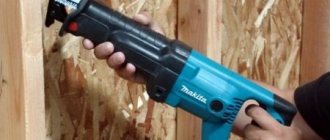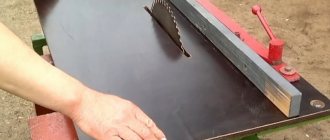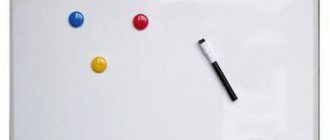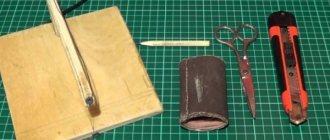The device of a bow saw for wood
- Frame made of rolled profiles. Depending on the size of the saw blade - and they are usually standard: 350 mm, 530 mm or 760 mm, the frame can be made in the form of an oval trapezoid (for longer blades) or an oval triangle (for shorter ones).
- A handle whose profile prevents sudden injury to the worker’s fingers.
- Saw blade.
- Devices for tensioning saw blades.
- Fastening the canvas to the frame.
The frame of a bow saw for wood has special requirements - it must be rigid and at the same time light, so as not to increase physical stress during sawing. A special tubular profile with a very small width satisfies the task. This makes it easy to bend it during the manufacturing process to the required frame configuration without losing the strength of the part, providing the saw with the necessary mobility.
One of the main differences in the design of modern bow saws for wood is the principle of saw blade tension. For example, the Gardena or Proline brands use a handle with an eccentric for tensioning: by using it, changing the angle of inclination of the handle relative to the longitudinal axis of sawing, you can thus adjust the tension force.
Manufacturers of saws from Bahco Stanley have taken a different path: there a special screw mechanism for tensioning the saw blade is mounted in the handle. The choice is determined by ease of use, however, the presence of a screw mechanism provides increased tension accuracy, and does not depend on random movements of the user, when the position of the handle during sawing can randomly change. Therefore, it is recommended to use a rotary tension mechanism if you have some experience working with a bow saw.
To fasten the saw blade to the opposite part of the “string” (frame), removable cotter pins or wing screws are used. The latter are more reliable, since the cotter pin, usually made of mild steel, wears out over time and can spontaneously come out of the mounting hole.
Safety precautions at work
To make working with a bow product as comfortable and safe as possible, you need to consider the following tips:
- place the blade only in separate slots located in the handle, and secure it in the required holes with special dowels;
- place the product near your chest so that the bowstring practically touches the body itself, and visually inspect the location of the canvas in the most careful way - so that it becomes perpendicular to your line of sight;
- by accurately turning the handle, you can easily achieve an even position of the blade with teeth in special holes;
after the canvas is adjusted, you should, carefully turning the arrow, tighten the string and stretch the racks in order to secure the canvas more firmly; You should not sharpen or straighten blades for this type of product without the help of a specialist if you do not have professional skills; It is best to immediately purchase sharp factory blades;
To learn how to choose the right bow saw and how to use it, watch the following video.
Bow saw blade
The versatility of this tool also determines changes in the design of the saw blade, in particular its teeth. Most often used:
- Saw blades with uniform tooth pitch. They are designed for smooth cutting of wood with a relatively short length.
- Canvases with the so-called “American” tooth, when after 3.4 ordinary teeth there is a double or “Kremlin” tooth. This configuration of the cutting part of the saw blade allows for longer and more complex cuts. The frequency of alternation determines the accuracy of the result: the closer the double teeth are located to each other, the less clean the cutting line will be.
- Spatial teeth with wide spacing. A blade with such teeth is useful for maximum cross-sectional sizes of wood being cut. The cutting force and the amount of waste increase, but sawing productivity becomes the highest possible.
Depending on the tasks assigned, the material of the saw blade also changes. For tools of relatively small sizes (350 mm, partly 530 mm), blades with a uniform pitch are used, which are made of structural chromium-nickel steel of type 45Х, 40ХН or 45Г. The blades undergo high-frequency hardening, as a result of which their surface hardness reaches 45...48 HRC. However, such blades are very sensitive to changes in the sawing axis, which easily changes due to the flexibility of the blade, and break at extreme bends.
READ Stihl 180 Saw Doesn't Start Floods Spark Plug
For blades with double teeth, high-carbon steel 7HF or even high-speed steel is used. The durability of such blades (if they are not made in China) is very high, since as the percentage of carbon in steel increases, its elastic properties increase. In addition, the blades do not need to be cooled, since the vanadium and tungsten contained in such steels are highly heat resistant.
For teeth with wide spacing, the decisive factor for durability is considered to be abrasive wear from wood rubbing against metal. Therefore, the Finnish company Fiskars applies a Teflon coating to the tools it produces, which reduces the coefficient of friction, thereby increasing the durability of the saw blade. Other manufacturers (for example, Bahco) produce bimetallic blades: the base is made of structural steel, and the cutting part is made of tool steel.
about everything a little or soTourist blog
Operating rules
In order to carry out cross-cutting with maximum convenience, the wood blanks must extend beyond the edge of the stationary support. Experts try to start sawing, focusing on the nail of the largest finger on the hand, which will hold the beam. As soon as the canvas “bites” into the material, it is carefully placed on the thumb itself. But for better cutting accuracy, it is best to use special templates.
A bow saw for wood is perfect for longitudinal cutting. For this process, the canvas must be secured at an angle of up to 90 degrees from the horizontal rack. The pressure here will be much less than with a cross cut, so this procedure will take a little longer.
If you need to make a curved cut, then you should stock up on a narrower blade so that its width does not exceed 8 mm. Blades for this kind of slots can be found with rectangular teeth and a significant spread - almost up to 2.5 denominations of the thickness of the blade itself. If you need to saw a material that is too thick with many knots, it is better to select the widest blade - up to 5 cm. It is better that it has a not very large spread, but significant thickness. It is not worth making a cut like a figured or curved one on such material.
Saws for any type of cutting may differ in the shape of the teeth. For cross cutting, the teeth will be in the form of a regular triangle with equal sides. For cutting lengthwise, use a slightly oblique triangle in the shape of a wolf tooth. On hiking trips, you will not need to saw wood along the grain. The main task here is to collect dead wood and cut it into a certain number of logs.
The effort you will have to spend on sawing will depend on the accuracy of sharpening and the correct alignment of the teeth of the product. When sawing, the teeth will become dull - their edges usually become rounded. The tip of the tooth will be the most dull. Sawing with such a product with blunt teeth is pure torture. Before using the saw, inspect it visually and carefully. Blunt teeth will immediately have a noticeable light stripe along the edge; a well-sharpened tooth will not have such an edge.
It is worth taking a closer look at how to properly sharpen this kind of product. If it is quite old and the height of the teeth seriously distinguishes one from the other, then you need to align them with a special file. The teeth are made straight before the sharpening process, but only after the setting has been carried out. Sharpening of products is done using a file in the shape of a small triangle. These are not very difficult manipulations, but they will require special patience. The tool blade will need to be clamped in a special vice. If you don’t have these, you need to secure the saw to some solid base - on the edge of a chair or stool.
Sharpening of the teeth must be done alternately through the tooth, first on one side, and then on the reverse side. A piece of metal, such as a chamfer, will be removed from two sides of the tooth, positioned at an angle of 60 degrees to the blade, which will match the angle of the file itself, which has 3 sides. It is necessary to remove a little more metal from the tip of the tooth than from its base. You can press on the sharpening tool only with a sharp “throw” forward. The tool will go back a little more freely so that the file comes off the surface of the blade a little.
What is a bow saw used for?
It is convenient to use a jigsaw to make short, mainly transverse cuts, and a hacksaw to make long, longitudinal cuts. And only with the help of a bow saw can you make a variety of dividing cuts, both with dry and wet wood. In addition, for a bow saw for wood, it does not matter how the wood is cut - along or across the grain. If we add to this the ability to work with one hand (the first “bows” were exclusively two-handed), it turns out that the tool in question can be used for cutting wood:
- in longitudinal;
- in transverse;
- in figured;
- in an angular direction.
The only insurmountable obstacle for bow saws is the transverse dimensions of the workpieces - for thick logs it is still better to use a power tool. However, you have to work much less often with thick logs...
Three circumstances give versatility to bow saws for wood:
- Adjustable tension of the saw blade (in some ways this process is similar to pulling the string of a bow, hence the name of the tool). Testing shows that bow saws can create tension forces of up to 100...120 kg without destroying the saw blade.
- The special shape of the teeth allows for both roughing and finishing cuts.
- The size of the saw is compact, which ensures its use even in cramped environments.
DIY bow saw
Modern manufacturers of bow saws and accessories for them - trademarks Bahco, Stanley, Intertool, Fiskars and others - complete their products with different types and designs of saw blades, which increases the ease of use of the tool.
You need different saws. Or how I came to the bow saw.
Homemade bow saw. According to the classical scheme. Collapsible.
I almost always take a saw with me into the forest. For PVD/autumn, a small saw is enough.
Pros: compactness, weight, efficiency, price – you can cut it alone
Cons: – low reliability – gets dull quite quickly – cutting thick trees is quite difficult
I went for quite a long time with Tajima ALOR-A240 – Aluminist Black 240, Folding Saw, 9.4in 9 TPI (Japan).
I like this saw . But it has a minus - the price. Our saw costs about 2000 rubles. Replacement blades for it are quite rare and cost about 800 rubles. One blade is enough for 1-2 seasons of intensive use. I'm disappointed, it's Japan after all. The company specializes in professional hand tools.
Among the advantages we can note: – compactness – relatively light weight (approximately 340g) – high efficiency (when the canvas is fresh)
We went on a boat trip to Karelia, we had saw =) Naturally, watermen don’t care about weight, but it’s still too much. As a result, I only took out the two-handed tool once; the rest of the time I prepared firewood with a Tajima hacksaw. The saw did an excellent job with trees 20-25 cm in diameter.
But when it gets colder and you go overnight, you want to sit by the fire longer. Or in general, that hike requires something more serious. Options? petrol is clearly not our tool =) is there a two-handed saw ? Only if it's a ski trip. Those. I need a saw that is light, compact, and has high performance. To prepare firewood in large quantities.
In the old days, this was the main tool of a carpenter. High productivity, precision cutting, low weight, ability to work alone.
Bow saw according to the classic design.
These are not currently on sale. I was surprised when the sellers at Lirua threw up their hands when asked about the availability of such a saw. They just don't know. And they have a saw But made from an aluminum pipe, you can carry such a saw on your backpack, but I don’t like it. And her weight is clearly more than 400g. Price approximately 1000 rub.
READ DIY metal saw
What to do? Do it yourself. Go.
I bought a canvas Bahco 607mm (Sweden). The company produces extremely high-quality tools.
In Liroy I bought a pvc pipe for heating d25, and an aluminum pipe, plus a couple of snap hooks. I made a frame for the saw according to the classic design with a crank.
All together weighs 340g. My Tajima folding hacksaw weighs this much. I like. A long blade will increase productivity and the diameter of logs that can be cut.
Pricing: Canvas bacho 630mm-450rub, lyroy tubes.250rub
Manufacturing is very simple. You don't even need a drill. All you need is a torch and a piece of old metal cutting cloth. The main thing is to carefully mark future holes. By heating the transverse tube we form holes on the PVC tubes. The horizontal crossbar should be slightly shorter than the saw blade itself. We heat the old metal blade and form holes in the pvc tubes for the saw blade. Everything fits me perfectly. We assemble the saw, insert the carabiners (fix the blade). We put on the laces with any stick and twist them with a sliver. There is no need to over-tighten, just adjust the rigidity of the frame and the normal tension of the canvas.
My tubes bend a little, so I want to try to do but with all aluminum tubes, I wonder how much stronger and heavier it will be.
How to carry a saw? I need to sew a cover. The canvas can be protected with thin plastic, for example from a stationery folder, or simply take a stronger fabric for the cover.
There is another option to carry the saw blade in a bowler hat. Twisting it. I got this idea from Grigory Sokolov’s video, link to YouTube, for which I thank him. I'll try.
UPD I’ll definitely write after I try the saw.
UPD_2 The saw passed the first test. Peels. Two problems have been identified: 1. Coupled snap hooks must be replaced with any non-coupled ones. The thread is capricious and jams.
It is necessary to replace plastic tubes with aluminum or wood. Insufficient saw blade tension. The tubes are bent. You can see it in the photo.
The saw cuts, but it is noticeable that the blade is moving. You can cut alone, but the output is small. If you cut together, it’s a song. It will take 3-5 minutes to fell a pine tree and cut it into logs for “nodya”. Swedish canvas - pass!
Here I found a YouTube video. Probably the most correct saw, from my point of view. The crossbar is rectangular, the grooves on the crossbar are rectangular, i.e. torsional rigidity. the canvas is retracted into the handles.
I have already told you how to make a bow saw in the forest with only one blade. You can read about this at the link.
Today I will tell you how to make a full-fledged bow saw at home. This saw will fit perfectly into a bushcraft setting, and it’s simply very convenient to use.
To begin with, we will need two identical planks, each approximately 40 cm long. I just found a suitable one at home, with a cross section of 20x40mm. These will be the handles of our saw.
At the ends, we drill through holes with the first drill we come across.
At the end we make a cut of such length that the hole in the saw blade coincides with the hole in the board.
For now, let's put the future handles to the sides and move on to the horizontal component of our saw.
Because the canvas is 530 mm long, I used a 500 mm board at random and had to shorten it a little, so 480 will be just right. The section of the board is 20x30.
Having retreated 10 mm from the end, we make a cut along the perimeter a couple of millimeters deep. Then, using a chisel or knife, we chop it off so that we get a peg.
In the middle of the block that will go on the handle, we mark the sample into which the peg will go, simply by placing it and tracing it with a pencil. We select the excess wood with a chisel.
DIY bow saw
Let's check how they fit together. Please note. The pin should not fit tightly into the groove.
Then we remove the edges with a rasp and form a handle that fits our hand.
We smooth out the unevenness from the rasp with a file. Those who wish can sand with different numbers of sandpaper. I haven't gotten around to it yet.
If you have a round rasp, then you can make a cut under the rope that pulls our bow.
I used the first two nails I came across to secure the canvas.
The assembly order is obvious. We insert the canvas into the handles and secure with nails. Next, insert the crossbar into the grooves. We put a loop of cord or paracord over the notches in the upper part of the handles. Insert a stick into the loop and twist it. As a result, the peg on the crossbar and the groove play the role of a hinge, and the canvas is stretched until it rings.
When complete, the weight of the bow saw was 450 grams. By the way, the aluminum bajo beam weighs 750 grams.
Now let's check how she saws. The result is excellent, no worse than its aluminum counterpart. Actually, it all depends on the canvas.
READ How to make a powerful battery on an angle grinder
As a summary, I will say that I am very pleased with the saw. First of all, the item is made with your own hands. Secondly, the bushcraft setting, which I really like. Third, work efficiency was not affected.
Perhaps now I’ll sand it better and soak it in additional linseed oil, and maybe I’ll cut out a simple ornament.
And that's all for now. Thank you for your attention!
UPD 02/08/15 We make the onion waterproof using a homemade wax impregnation, the recipe for which can be found here
Manufacturing
- Wooden stick (suitable from under furniture)
- Board
- Twine
- Saw blade
- Bolts and nuts
- Tools
Before you start work, please read the drawing:
The first step is to cut your stick in half on a pendulum saw. Next, we measure 1.5-2 centimeters from the end of the sawn piece and process it with a rasp under the twine for the tie.
We do the same with the second segment. To do this, clamp two pieces in a vice at once to save time.
Make a groove in the side edge of the board for the piece of stick you worked with.
Repeat on the opposite side of the board. This is what you should end up with:
Next, start cutting the sections to install the cutting blade. To do this, clamp the segments that will serve as the handles of the saw in a vice, measure the center of one and the second segment with a ruler, and then connect these points with a straight line.
Using a regular saw, carefully cut along this central mowing line. Insert the blade into the cuts and check how it fits, correct anything if necessary.
Afterwards, you need to make holes in the handles for bolts to fasten the blade. Insert the canvas, mark the locations for the holes, and then remove the canvas.
Next, use a drill or drill press to make holes on the first and second handles.
We continue to work on the handles. Mark on them how it will be more convenient for you to hold the saw, then use a rasp to process the indentations for your fingers in these places.
The grooves from the rasp turn out to be uneven and rough, so take a rounded metal file and process the grooves with it.
In the back of the handle it is also necessary to make indentations for the palms with a rasp, which are then also processed with a file.
As a result, you should end up with two handles like this:
Having measured 1-1.5 centimeters from the recess for the fingers on the handles, start making grooves for the board.
How to make a bow saw with your own hands
Place it evenly between the handles and mark its width on the handles themselves with lines.
Use a rasp or file to cut a recess of a few millimeters, then round it so that the board and handles fit perfectly into each other's grooves.
If desired, you can decorate the bar and handles. You can do it in your own style, or like me:
Lay out the structure on the table, put on the canvas and tighten it with bolts and nuts.
Next, take the twine, wrap it around the indentation at the end of one handle and tie it, then twist the ends of the twine, insert a small piece of wood into the central loop and continue twisting the twine, wrap the indentation at the end of the second handle and tie it.
Afterwards we go to test a homemade bow saw.
bow saw at home is ready.
I recommend the following video, where the author makes a bow saw with his own hands:
Today we made a camping bow saw with our own hands. For this we needed: a wooden stick, a board, twine, a saw blade, bolts and nuts and tools.
The first step in the manufacturing process was to make wooden saw handles from an old stick by sawing it in half.
Next, we used a rasp to make indentations for the twine and grooves for the handles on the board, which serves as a plank for us. After a recess for fingers on the handle for a more comfortable grip.
We marked the central line and sawed the handles along it, so we made cuts for the blade. Using a drill or a drilling machine, holes were made in the handles for the bolts that will hold the blade.
Finally, we made more convenient grooves on the handles for the board planks and, if desired, decoratively processed the saw.
We pulled the string, tightened the bolts and went to test a homemade bow saw.
Write in the comments if you have ever used a bow saw?
Sources:
https://booktube.ru/kak-sdelat-luchkovuju-pilu-svoimi-rukami/ https://m-strana.ru/blog/post/svoimi-rukami-diy/56075/samodelnaya-luchkovaya-pila-iz- chego-i-kak-ya-ee-soorudil-61294/
Advantages of a standard hacksaw
The first advantage is financial savings. If you have a lot of effort and time, then there is absolutely no need to spend money on more expensive electric saws. In this case, they are simply not needed.
If you need to saw off just one or a few parts over a long period of time, then there is no point in spending money on a more expensive, possibly electric saw. After all, there is no obvious need for it.
Moreover, an ordinary classic hacksaw does not need to be connected to an outlet and configured; the process happens quite quickly.
The third plus smoothly follows from point two. When using a standard hacksaw, there is no need to spend on electricity.
While electric saws typically don't use much power, they still require electricity to operate. There are situations when you need to do something with a saw, and the lights are turned off.










